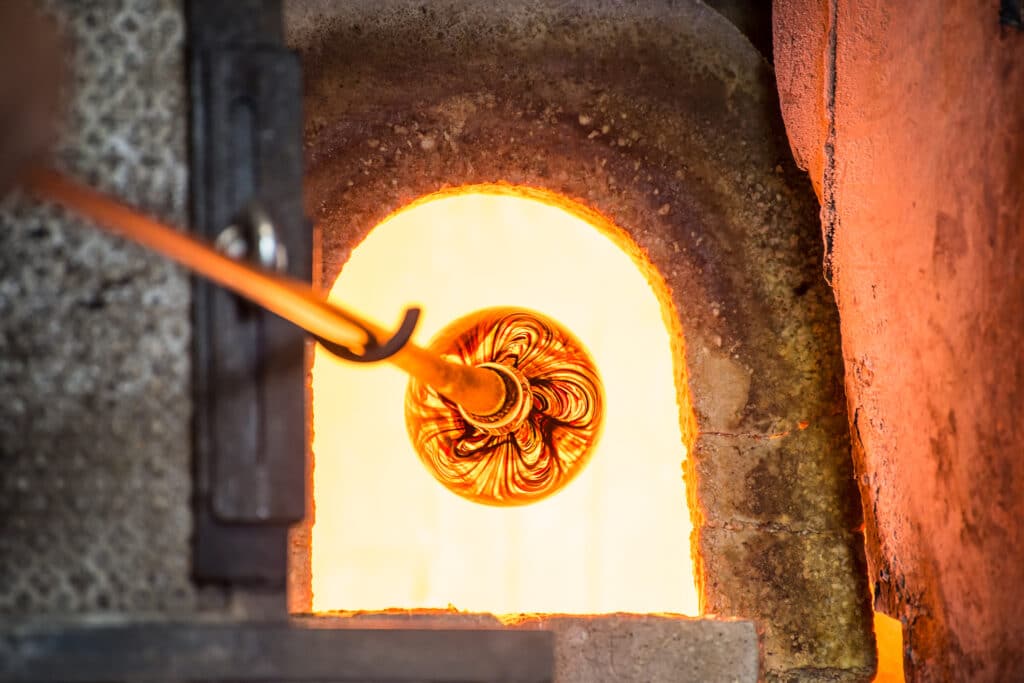
Murano glass tours in Venice have a price range in 2025 from about $6 (~€5) up to $412 (~€380) per person. This wide range covers everything from short, affordable glassblowing demonstrations in group settings to exclusive private workshops where you can even create your own glass piece. Typical guided tours and boat excursions fall in between these extremes – often around $20-$50 for a group tour – depending on whether it’s a basic factory visit or an extended island-hopping experience.
Tours generally operate daily, with most glass factories welcoming visitors from roughly 9:30 AM to 4:30 PM. During the busy summer season, tour departures are frequent throughout the day, whereas in winter the schedule might be more limited (some furnaces close briefly for lunch, and a few may even pause around mid-August during local Ferragosto holidays). We joined a Murano glass tour on 11 May 2025, and all information here is based on our firsthand experience as of that date.
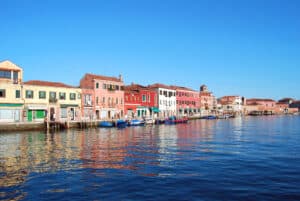
The main canal of Murano with its colours
Inside the Murano Glass Tour Experience
Ever wondered how a blob of molten glass turns into a beautiful work of art? We certainly did, and the Murano glass tour gave us the answer in spectacular fashion. Our journey began with a scenic boat ride across the Venetian Lagoon to Murano, a small island world-famous for its centuries-old glassmaking tradition.
Stepping into the workshop, we were greeted by the heat of the furnace and the sight of master artisans at work. The guide introduced the maestro, who gathered glowing orange glass on a long pipe – the show was about to begin.
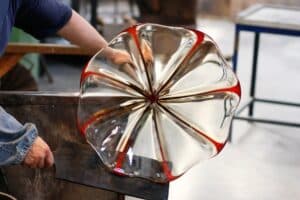
Murano Glass Tours
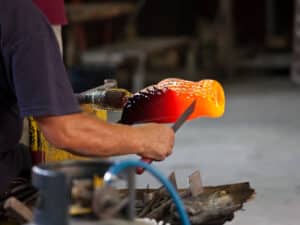
Murano Glass Tours
Watching the glassblower in action was mesmerizing. With skillful breaths and swift, practiced gestures, he blew a delicate crystal vase before our eyes, then immediately crafted a prancing glass horse from the same molten batch.
How did he manage such detail so quickly? We learned that these craftsmen train for decades, passing down techniques through generations. In fact, Murano’s glassmasters have honed their art here since the 13th century when the Venetian Republic relocated all glass furnaces to Murano for safety.
The pride in this heritage was evident – the artisan moved with confidence and precision, as if performing an ancient dance. We stood just a few feet away, marveling at the transformation of sand and minerals into a gleaming artwork. Its not every day that one can witness 700 years of tradition distilled into a 15-minute demonstration.
Throughout the demonstration, our guide narrated each step. She explained how different minerals create the vibrant colors in Murano glass and why certain techniques (like blowing, molding, and stretching the glass) have barely changed since medieval times. We found ourselves peppering her with questions: Why doesn’t the glass shatter from the heat? How do they get those intricate patterns inside a bead? Each answer revealed just how much science and artistry go hand-in-hand here. At one point, we got to handle a cooled glass piece – a surprisingly heavy, solid vase – and it gave us a new appreciation for the craftsmanship. The tour also included a quick visit to the factory’s showroom. We browsed shelves of exquisite glassware from tiny figurines to ornate chandeliers. There was no hard sell, but we definately felt tempted seeing the quality up close. (One tip: if you’re looking to purchase a souvenir, ensure it comes with the official “Vetro Murano Artistico” authenticity seal – this label is a guarantee that you’re buying genuine Murano handiwork).

Murano glass on sale in Venice, Italy.
Exploring Nearby Sights and Local Delights
After your glass factory visit, there’s plenty more to explore around Murano. A short walk from many workshops is the Murano Glass Museum (Museo del Vetro), housed in a historic palace. This museum takes you on a journey through the island’s glassmaking history – we saw glass pieces from ancient Roman times through to modern avant-garde works, all in one afternoon. It’s a rich context to what you just witnessed during the tour (the museum’s exhibits really underline how Murano’s techniques evolved over the centuries).
Near the museum, you can also step into the Church of Santi Maria e Donato, one of Murano’s oldest churches, famous for its beautiful 12th-century mosaics. We wandered inside to admire the glittering Byzantine-style floor and quietly reflect – a peaceful counterpoint to the fiery activity in the glass furnaces. For a different twist on the glass experience, consider visiting the former Church of Santa Chiara (nicknamed the “Glass Cathedral” by locals). In the evenings, it hosts atmospheric glass-blowing performances set to music and lights, often with a wine tasting for guests – a unique blend of art and entertainment that we heard rave reviews about.
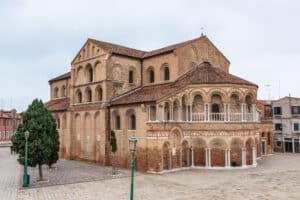
Church of Santi Maria e Donato
When hunger strikes, Murano offers a handful of delightful restaurants where you can savor Venetian cuisine. We had lunch at Osteria al Duomo, a rustic trattoria with a garden courtyard, tucked behind the island’s main church. Their seafood risotto and wood-fired pizza paired perfectly with a crisp local white wine – an ideal way to recharge after the tour.
Another well-known spot is Trattoria Busa alla Torre, beloved for its fresh catch of the day and classic lagoon dishes; it’s a no-frills place where we noticed both tourists and locals enjoying hearty plates of pasta alle vongole (clam pasta) and fried calamari. For a quick snack or caffeine fix, there are cozy cafés along the canals – we treated ourselves to gelato and espresso at a little waterside cafe, watching the comings and goings of island life.
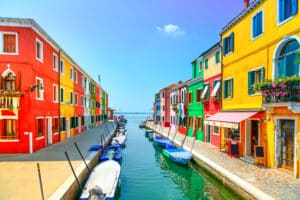
Burano island
Finally, if you have time, we recommend hopping over to the nearby island of Burano (often offered as a combo trip with Murano). Burano’s rainbow-colored houses and lacemaking heritage make it a charming add-on – after witnessing glass art, seeing Burano’s delicate handmade lace felt like the perfect complement. Whether you end your day browsing Murano’s many glass boutiques (don’t forget to look for that authenticity sticker!) or strolling through Burano’s photogenic streets, you’ll be experiencing the very best of Venice’s artisanal islands. Visiting Murano left us with a deeper appreciation for this timeless craft and the island’s vibrant community – it’s an experience we highly recommend, and one we’re sure will leave you in awe of the magic that is glass.

